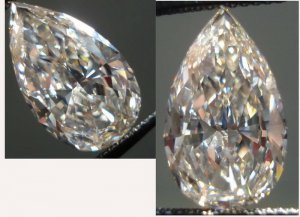- Joined
- Jan 7, 2009
- Messages
- 10,440
Hi All!!
Iota, and Dmitri- thank you so very much for your posts- they really made me feel good!
David- just to address a few points.
1) You mentioned you have "gently battled this sort of seller". I respectfully ask not to be grouped with other sellers that may have disagreed with you. I won''t lump you with other gemologists, but please return that respect.
2) You mentioned that there were VERY FEW well cut fancies 15 years ago.
Maybe it''s because I was trained by Harry Winston- who has always focused on beautiful cut- or our general different circles that we travel in- but I saw, and graded- MANY gorgeous Pear Shapes, Emerald Cuts and other Fancy Shapes back in the mid ''70''s.
They had some amazingly well cut fancy shapes at M Fabrikant in the ''80''s as well. There''s no question there were a lot of junky made stones back then- as a percentage, far higher than I see today, but make no mistake, there were amazing fancy shapes 15 years ago, 20 years ago, and 35 years ago. Well cut stones that WILL hold up to today''s best.
I''ll also address a few other points you made in a little bit....
gotta go!
Iota, and Dmitri- thank you so very much for your posts- they really made me feel good!
David- just to address a few points.
1) You mentioned you have "gently battled this sort of seller". I respectfully ask not to be grouped with other sellers that may have disagreed with you. I won''t lump you with other gemologists, but please return that respect.
2) You mentioned that there were VERY FEW well cut fancies 15 years ago.
Maybe it''s because I was trained by Harry Winston- who has always focused on beautiful cut- or our general different circles that we travel in- but I saw, and graded- MANY gorgeous Pear Shapes, Emerald Cuts and other Fancy Shapes back in the mid ''70''s.
They had some amazingly well cut fancy shapes at M Fabrikant in the ''80''s as well. There''s no question there were a lot of junky made stones back then- as a percentage, far higher than I see today, but make no mistake, there were amazing fancy shapes 15 years ago, 20 years ago, and 35 years ago. Well cut stones that WILL hold up to today''s best.
I''ll also address a few other points you made in a little bit....
gotta go!




300x240.png)